Mirella Sichirollo Patzer's Blog, page 29
August 20, 2013
I'm Writing
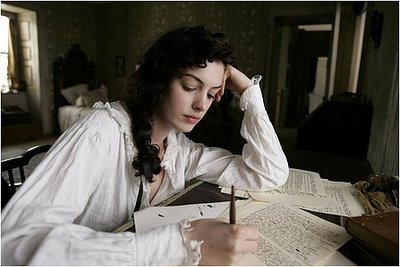
Lady of Destiny - Today's starting sentence:
When Hubert set out on this quest to make Marie-Anne
his wife, he had kept his feelings aloof. It was part of his plan to pursue her
quietly and at a distance.









Published on August 20, 2013 11:26
August 17, 2013
I'm Writing - Lady of Destiny
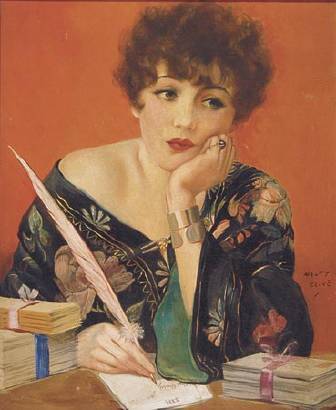
Today I'm working on Lady of Destiny, a historical romance set in the 17th century. Here's my starting point in the story:
People cheered as Hubert rode through the streets of Trois-Rivières, victorious from a
successful campaign against the Iroquois. No sound could have been more pleasing
to him.









Published on August 17, 2013 09:22
The Outspoken Venetian Nun - Elena Cassandra Tarabotti (Arcangela) 1604 – 1652
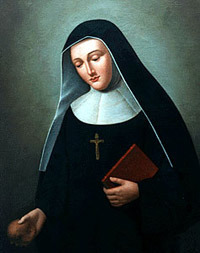
As the eldest daughter in a family of eleven children. She was born lame and because of her ailment, her marriage prospects were considered very poor. Seeing her as a liability, her stringent, tyrannical parents shipped her off to the Benedictine Convent of Sant'Anna in Castello, Venice when she was a only eleven years old. Despite her parents eagerness to get rid of her, she looked forward to life in a convent. At least there she could learn to read and write.
Wrong! The education she received there was poor indeed. So she set out to teach herself to read and write. At sixteen she took her initial vows and three years later her final vows. She did not want to be a nun, but she had no alternative. Her family refused to support her or provide a dowry for marriage because of her lameness. She took the name Arcangela.
With pen in hand, Arcangela discovered she had a mighty voice. She wrote a total of 6 books. One was named Paternal Tyranny and is a passionate indictment not only of her family who dumped her in a convent but also of the convent system in which young women were shunted aside to wither uneducated and unappreciated.
Through her writing she wrote many a scathing diatribe about the poor education of nuns and the hardships of life in a convent. Not only did she write books, but she corresponded with numerous famous and not so famous persons throughout Italy during her lifetime. As a result of her forceful defense of women in her writing and the many questions she raised about the social, political and religious institutional practices of the time, Tarabotti is considered by many to be a true pro-feminist writer as well as an early political theorist.
Tarabotti's passion for learning was so intense, the convent allowed her to receive visitors, news, and books from various prestigious learning academies. All her books were published. Tarabotti died in 1652 at the age of 48.









Published on August 17, 2013 00:01
August 4, 2013
A Turkish Harem - The Life of Halide Edib Adivar by Frances Kazan
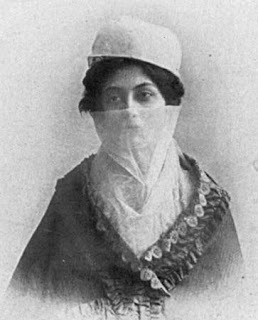
My ‘Turkish’ novels “Halide’s Gift” and “The Dervish” were both based on the life of Halide Edib Adivar, the writer, and nationalist, whose life spanned a pivotal period of Turkish history, from the last years of the Ottoman Empire, through the war of Independence to the emergence of modern Turkey. Halide Hanim (a courtesy title) died in 1964, thirty years after Ataturk founded the Turkish Republic in 1923.
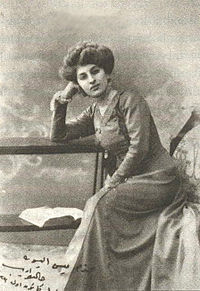
I first came across the “Memoirs of Halide Edib” gathering dust on the shelves of the library at NYU, where I was doing a Masters in Turkish Studies. Prior to the first Gulf War, the Middle Eastern studies was distinctly unfashionable, and the Ottoman section of the library rarely used. Fortunately Halide Hanim wrote her books in fluent but idiosyncratic English. Captivated by her descriptions of harem life, family tensions, and her college education Halide Edib became my obsession; where possible I incorporated her writing into my scholarship. I had a lot to work with, two novels, two volumes of memoirs, numerous articles, non fiction books about India and Turkey, even a surreal play with over twenty characters.
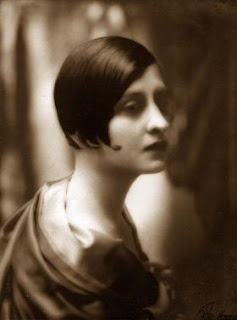
At a time when women were secluded in the harem Halide’s father took the unusual step of giving his daughter a classical education, usually reserved for boys. From a young age Halide was tutored at home in Arabic and Persian. When she turned fifteen Edib Bey enrolled her at the American Girls College in Scutari. The Sultan was scandalized; Edib’s career at court ended. Edib remained convinced English was the language of the future, he must have understood the old ways were coming to an end. Ideals of the Enlightenment had been influencing the Ottoman intelligentsia for almost a century; change was in the air long before the Ottomans entered WW1 on the side of the Axis powers.
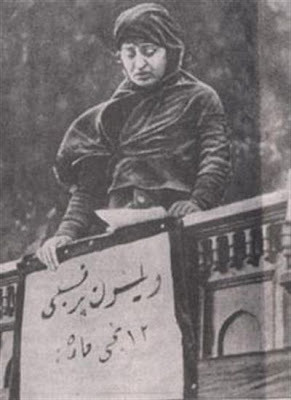
Edib Bey was a contradiction, educated, modern, democratic, yet an Ottoman of the old school. He was probably Greek by birth, from Salonika, then part of the Empire. Recognizing his intelligence an influential sheik brought him to Istanbul where he was educated at court. The Devshirme system was a feature of Ottoman rule; gifted boys from the minorities converted, were educated and became part of the vast Ottoman bureaucracy. Edib Bey was elevated to first secretary at Yildiz Palace, where the paranoid Sultan Abdul Hamid II, fearing assassination, kept his entire court cloistered behind high walls. Halide’s mother, came from a well to do family, descended from Eyoub, the standard bearer of the Prophet. Her mother died from consumption when Halide was two. After her death Edib Bey, shocked his mother in law by marrying the daughter of their housekeeper with whom he had more children.
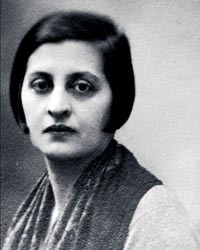
Halide’s childhood home was a konak, a wooden mansion set in a rambling garden on a hill above Besiktas, close to the Palace. Her extended family included her half sister, Mahmoure, the daughter of her mother’s first husband, a Kurdish chief, and the family of her father’s new wife. Then Edib Bey married Teize, a former Palace Lady, and Halide’s tutor and a friend of her grandmother. Halide’s happiness came to an abrupt end; the harem seethed with jealousy and intrigue. Loyalties were divided,
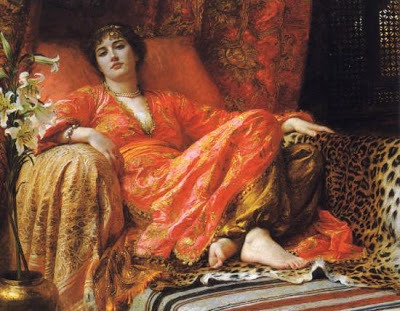
Palace Ladies were a peculiarly Ottoman phenomena, some were concubines, others never saw the Sultan, let alone shared his bed. Teize must have been one of the hundreds who lived in the Royal harem, some as servants, others tutors to the royal children, or slaves, all under the supervision of the Imperial eunuchs. There is no record of why Teize quit the palace or how she came to be under the protection of Halide’s Grandmother, save the two had become friends.
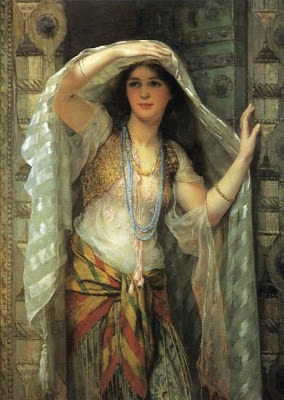
Each wife needed her own living quarters, Edib moved the household to Scutari (now Uskudar) on the Asian shore. In her memoir Halide describes a crumbling mansion with spacious rooms, one leading to another, tall windows, light streaming across the wooden floors. Like the konak in Besiktas the house was surrounded by gardens and apple orchard, all enclosed by a high wall.
What writer could resist such a setting? It was a pleasure to fashion my own novels from such a treasure trove of material. Istanbul in the late Ottoman years must have been a magical city. Barely half a million inhabitants lived surrounded by large bodies of clear, unpolluted water, a radiant light reflected across the hills, covered with wild gardens and half hidden mansions. I imagined cobbled streets; city squares deserted in the heat and hushed interiors of the great mosques. Since I have always been intrigued by history, recreating Halide’s story in my own voice was a joy. When I was finished I realized my unconscious mind had woven in my own story into Halide’s along with the story of my mother and my grandmothers. All their unfulfilled hopes and dreams, their wish for a better life stifled by the conditions of the time. Another book I have yet to write.
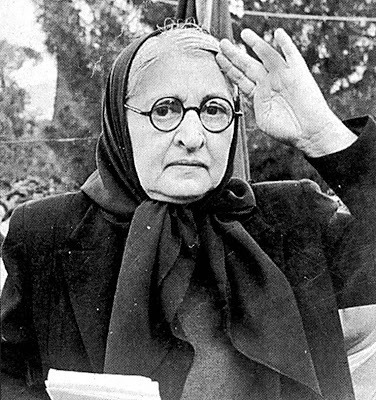
A foot note…….I want to thank the late Dr. Kathleen Burrill of Columbia University and Dr. Inci Enginun who selflessly shared their scholarship, and their insights into the life and work of Halide Edib when I started to pursue my studies. They were generous and patient, and set a high standard for me to follow.
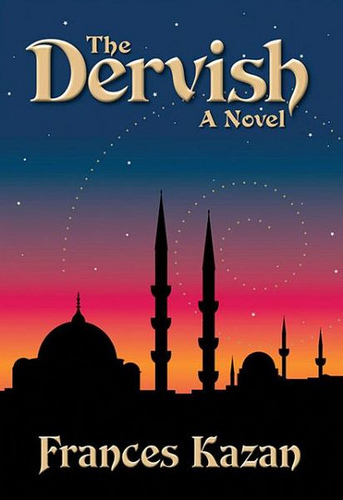









Published on August 04, 2013 07:28
August 3, 2013
Victorian Women & The Mystery of Sex by Stephanie Carrol
Win a copy of
A White Room
by Stephanie Carroll
Click here to enter
Victorian Women and The Mystery of Sex
By
Stephanie Carroll
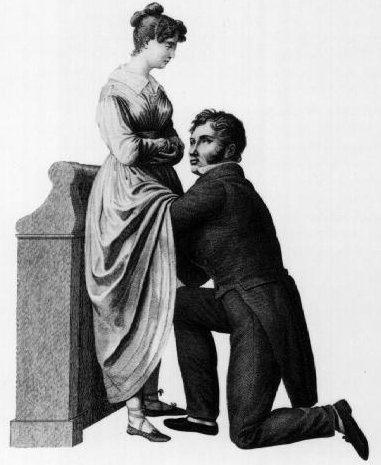
While
researching A White Room, I read a letter
from a Victorian woman telling her married friend how she hadn’t known what was
to happen between her and her husband on her wedding night. She explained that
her mother had refused to tell her anything beyond the difference between men
and women, which she had done by referencing nude art. That letter was only one
example historians have detailing how prior to marriage, sex was a mystery for
many Victorian women.
He slipped into
the bed, and I stiffened with uncertainty. I wondered, should
I tell him I was awake? Should I wait for him? What was it that
I was supposed to do? I certainly couldn’t initiate without knowing.
If I didn’t know, did he know how to begin? He must have known,
for I surely did not. Should I reach for his hand or his lips? Or
should he reach for me? My panic returned, and I lay wide awake.
What was to happen? What was I supposed to do? What—then I heard a noise. I listened. John was
snoring.
A White Room
page 49
Something
like this could remain a mystery because during the nineteenth century, it was
believed that open discussion on the matter of sex or sexual matters would lead
to perversion. Other topics related to the female reproductive system were also
off-limits until it became absolutely necessary to speak of them. Victorians
feared that even the knowledge of menstruation could destroy their child’s
innocence, so mothers wouldn’t prepare their daughters for the event but would wait
until it happened.
Wendy looked off
blank-faced, as if she weren’t aware of the slick blood
between her legs. Bright red streaked across the blanket but appeared like
black smears on Wendy’s dark skin. Much of it was dry, but some
glistened. I searched all over her lower body but couldn’t find
anything. When I learned
she had woken that way and just turned twelve, I exhaled and
smiled gingerly. I explained what happens to girls when they get
older and to women every month. Mothers often waited until
bleeding occurred before explaining it to their daughters. When it had first
happened to me, I thought I was dying. I told her she was
becoming a woman. This was pleasing to little Wendy, who must
have thought she was dying, too.
A White Room
page 209
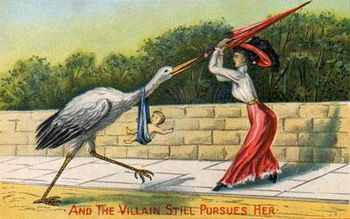
Even
pregnancy – the most praised thing a woman could do at this time – was considered
taboo for open discussion. Women had codes to refer to pregnancy such as
“expecting” and “in a family way.” Once they began to show, they retreated into
a seclusion known as “confinement.”
She was
expecting, but continued to work despite the fact that she had
begun to show. This wasn’t abnormal among working class women, but
polite society considered such a delicate condition to be a private
affair and even deemed it an inappropriate topic for open
conversation or polite correspondence. Middle and upper class women
went into confinement or took a lying-in period. They withdrew
from the public and dedicated most or all of their time
resting for the sake of the child and public decency.
A White Room
page 53
Male
doctors were beginning to practice gynecology, but refused to look at their
patients’ genitalia, either working blind under the protection of a curtain or
by using a mirror so their gaze was at least indirect—again to prevent
perversion.
Eventually,
Victorian fears evolved into the idea that the female reproductive organs
themselves were in fact dangerous in other ways and not just to men but to
women. Hysteria was a catch-all diagnosis for women having any kind of mental
or emotional complaint and became so popular in the late nineteenth century,
that some called it an epidemic. One of the prominent theories as to the cause
was that the uterus detached and wondered aimlessly around the body. A surgeon
developed a procedure to remove the defective organs, and this is where we get
the term hysterectomy.
This makes
it sound like the Victorians were a bunch of crazy prudes and for a long time
historians had concluded basically the same thing. That is until 1974 when
historian Carl Degler stumbled on a set of papers in the archives of Stanford
University. Now called the Mosher Survey, those bound papers were a
collection of questionnaires created and collected by Dr. Clelia Duel Mosher, who taught at Stanford around the
turn of the twentieth century. The unpublished surveys
asked Victorian women a variety of questions about sex revealing that although many
were ignorant up until the wedding night, women became very well educated and
even confident in the matter thereafter. The women interviewed spoke of sex as
natural, healthy, and pleasurable.
This
inspired a deeper look into the history of Victorian women in the home. Historians
learned that married women confided in each other regarding sexual issues and relied
upon one another for other secret knowledge, such as contraception and
abortion. There is an entire field of study today on Victorian female
friendships. One area of focus is on the fact that many of these female
friendships turned into sexualized relationships, but most were simply women
uniting over collective, natural needs that were shunned by their society.
Although
Victorian values made sexual matters something of a mystery for young women, it
also united mature women together. As time went on and more women broke out of
the domestic sphere, they began to demand open discussion on feminine matters,
which led to a gynecological and birth control movement in the early twentieth
century. The product of the mystery of sex is comparable to a secret
sisterhood, which undoubtedly played a role in women’s ultimate demand that their
needs not be kept in the shadows any longer.

Advanced Praise for A White Room
“A novel of grit,
independence, and determination ... An intelligent story, well told.”
—Renée Thompson, author of The Plume Hunter and The Bridge at
Valentine
“The best historical fiction makes
you forget it’s fiction and forget it’s historical. Reminiscent of The
Yellow Wallpaper … the thoughtful, intricate story Carroll relates is
absolutely mesmerizing.”
—Eileen Walsh, Ph.D. U.S. Women’s History, University of
San Diego
About A
White Room
At the close of the Victorian
Era, society still expected middle-class women to be “the angels of the house,”
even as a select few strived to become something more. In this time of change,
Emeline Evans dreamed of becoming a nurse. But when her father dies
unexpectedly, Emeline sacrifices her ambitions and rescues her family from
destitution by marrying John Dorr, a reserved lawyer who can provide for
her family.
John moves Emeline to the remote
Missouri town of Labellum and into an unusual house where her sorrow and
uneasiness edge toward madness. Furniture twists and turns before her eyes,
people stare out at her from empty rooms, and the house itself conspires
against her. The doctor diagnoses hysteria, but the treatment merely reinforces
the house’s grip on her mind.
Emeline only finds solace after
pursuing an opportunity to serve the poor as an unlicensed nurse. Yet
in order to bring comfort to the needy she must secretly defy her
husband, whose employer viciously hunts down and prosecutes unlicensed
practitioners. Although women are no longer burned at the stake in 1900,
disobedience is a symptom of psychological defect, and hysterical women must be
controlled.
A novel of madness and secrets, A White Room presents a fantastical
glimpse into the forgotten cult of domesticity, where one’s own home could
become a prison and a woman has to be willing to risk everything to be free.
Available in Print $14.99 and
eBook $3.99 (Kindle, Nook, Sony, e-pub)
Amazon - Barnes & Noble - Sony - Kobo - Inktera - Smashwords - Apple’s iBooks
About the Author
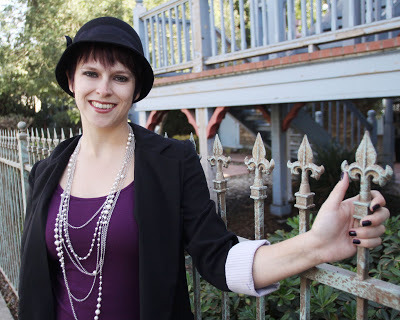
As a reporter and community
editor, Stephanie Carroll earned first place awards from the National Newspaper
Association and from the Nevada Press Association. Stephanie holds degrees in
history and social science. She graduated summa cum laude from California
State University, Fresno.
Her dark and magical writing is
inspired by the classic authors Charlotte Perkins Gilman (The Yellow Wallpaper), Frances Hodgson Burnett (The Secret Garden), and Emily Bronte (Wuthering Heights).
Stephanie writes The Unhinged Historian
blog, exploring the dark side of the Victorian Era and Gilded Age, and Unhinged & Empowered Navy Wives for conquering those little moments that make Navy Wives feel crazy.
Stephanie lives in California, where her husband is stationed with the U.S.
Navy. Her website is www.stephaniecarroll.net.
A White Room is her debut novel.
Find Stephanie Carroll
Facebook - Twitter - Goodreads
www.stephaniecarroll.net
Stephanie Carroll’s Blogs
The Unhinged Historian
Unhinged & Empowered Navy Wives
Photo Credits:
Photo Credit: uppityrib via photopin cc
Photo Credit: Public Domain 1822 drawing by Jacques-Pierre Maygnier









A White Room
by Stephanie Carroll
Click here to enter
Victorian Women and The Mystery of Sex
By
Stephanie Carroll

While
researching A White Room, I read a letter
from a Victorian woman telling her married friend how she hadn’t known what was
to happen between her and her husband on her wedding night. She explained that
her mother had refused to tell her anything beyond the difference between men
and women, which she had done by referencing nude art. That letter was only one
example historians have detailing how prior to marriage, sex was a mystery for
many Victorian women.
He slipped into
the bed, and I stiffened with uncertainty. I wondered, should
I tell him I was awake? Should I wait for him? What was it that
I was supposed to do? I certainly couldn’t initiate without knowing.
If I didn’t know, did he know how to begin? He must have known,
for I surely did not. Should I reach for his hand or his lips? Or
should he reach for me? My panic returned, and I lay wide awake.
What was to happen? What was I supposed to do? What—then I heard a noise. I listened. John was
snoring.
A White Room
page 49
Something
like this could remain a mystery because during the nineteenth century, it was
believed that open discussion on the matter of sex or sexual matters would lead
to perversion. Other topics related to the female reproductive system were also
off-limits until it became absolutely necessary to speak of them. Victorians
feared that even the knowledge of menstruation could destroy their child’s
innocence, so mothers wouldn’t prepare their daughters for the event but would wait
until it happened.
Wendy looked off
blank-faced, as if she weren’t aware of the slick blood
between her legs. Bright red streaked across the blanket but appeared like
black smears on Wendy’s dark skin. Much of it was dry, but some
glistened. I searched all over her lower body but couldn’t find
anything. When I learned
she had woken that way and just turned twelve, I exhaled and
smiled gingerly. I explained what happens to girls when they get
older and to women every month. Mothers often waited until
bleeding occurred before explaining it to their daughters. When it had first
happened to me, I thought I was dying. I told her she was
becoming a woman. This was pleasing to little Wendy, who must
have thought she was dying, too.
A White Room
page 209

Even
pregnancy – the most praised thing a woman could do at this time – was considered
taboo for open discussion. Women had codes to refer to pregnancy such as
“expecting” and “in a family way.” Once they began to show, they retreated into
a seclusion known as “confinement.”
She was
expecting, but continued to work despite the fact that she had
begun to show. This wasn’t abnormal among working class women, but
polite society considered such a delicate condition to be a private
affair and even deemed it an inappropriate topic for open
conversation or polite correspondence. Middle and upper class women
went into confinement or took a lying-in period. They withdrew
from the public and dedicated most or all of their time
resting for the sake of the child and public decency.
A White Room
page 53
Male
doctors were beginning to practice gynecology, but refused to look at their
patients’ genitalia, either working blind under the protection of a curtain or
by using a mirror so their gaze was at least indirect—again to prevent
perversion.
Eventually,
Victorian fears evolved into the idea that the female reproductive organs
themselves were in fact dangerous in other ways and not just to men but to
women. Hysteria was a catch-all diagnosis for women having any kind of mental
or emotional complaint and became so popular in the late nineteenth century,
that some called it an epidemic. One of the prominent theories as to the cause
was that the uterus detached and wondered aimlessly around the body. A surgeon
developed a procedure to remove the defective organs, and this is where we get
the term hysterectomy.
This makes
it sound like the Victorians were a bunch of crazy prudes and for a long time
historians had concluded basically the same thing. That is until 1974 when
historian Carl Degler stumbled on a set of papers in the archives of Stanford
University. Now called the Mosher Survey, those bound papers were a
collection of questionnaires created and collected by Dr. Clelia Duel Mosher, who taught at Stanford around the
turn of the twentieth century. The unpublished surveys
asked Victorian women a variety of questions about sex revealing that although many
were ignorant up until the wedding night, women became very well educated and
even confident in the matter thereafter. The women interviewed spoke of sex as
natural, healthy, and pleasurable.
This
inspired a deeper look into the history of Victorian women in the home. Historians
learned that married women confided in each other regarding sexual issues and relied
upon one another for other secret knowledge, such as contraception and
abortion. There is an entire field of study today on Victorian female
friendships. One area of focus is on the fact that many of these female
friendships turned into sexualized relationships, but most were simply women
uniting over collective, natural needs that were shunned by their society.
Although
Victorian values made sexual matters something of a mystery for young women, it
also united mature women together. As time went on and more women broke out of
the domestic sphere, they began to demand open discussion on feminine matters,
which led to a gynecological and birth control movement in the early twentieth
century. The product of the mystery of sex is comparable to a secret
sisterhood, which undoubtedly played a role in women’s ultimate demand that their
needs not be kept in the shadows any longer.

Advanced Praise for A White Room
“A novel of grit,
independence, and determination ... An intelligent story, well told.”
—Renée Thompson, author of The Plume Hunter and The Bridge at
Valentine
“The best historical fiction makes
you forget it’s fiction and forget it’s historical. Reminiscent of The
Yellow Wallpaper … the thoughtful, intricate story Carroll relates is
absolutely mesmerizing.”
—Eileen Walsh, Ph.D. U.S. Women’s History, University of
San Diego
About A
White Room
At the close of the Victorian
Era, society still expected middle-class women to be “the angels of the house,”
even as a select few strived to become something more. In this time of change,
Emeline Evans dreamed of becoming a nurse. But when her father dies
unexpectedly, Emeline sacrifices her ambitions and rescues her family from
destitution by marrying John Dorr, a reserved lawyer who can provide for
her family.
John moves Emeline to the remote
Missouri town of Labellum and into an unusual house where her sorrow and
uneasiness edge toward madness. Furniture twists and turns before her eyes,
people stare out at her from empty rooms, and the house itself conspires
against her. The doctor diagnoses hysteria, but the treatment merely reinforces
the house’s grip on her mind.
Emeline only finds solace after
pursuing an opportunity to serve the poor as an unlicensed nurse. Yet
in order to bring comfort to the needy she must secretly defy her
husband, whose employer viciously hunts down and prosecutes unlicensed
practitioners. Although women are no longer burned at the stake in 1900,
disobedience is a symptom of psychological defect, and hysterical women must be
controlled.
A novel of madness and secrets, A White Room presents a fantastical
glimpse into the forgotten cult of domesticity, where one’s own home could
become a prison and a woman has to be willing to risk everything to be free.
Available in Print $14.99 and
eBook $3.99 (Kindle, Nook, Sony, e-pub)
Amazon - Barnes & Noble - Sony - Kobo - Inktera - Smashwords - Apple’s iBooks
About the Author

As a reporter and community
editor, Stephanie Carroll earned first place awards from the National Newspaper
Association and from the Nevada Press Association. Stephanie holds degrees in
history and social science. She graduated summa cum laude from California
State University, Fresno.
Her dark and magical writing is
inspired by the classic authors Charlotte Perkins Gilman (The Yellow Wallpaper), Frances Hodgson Burnett (The Secret Garden), and Emily Bronte (Wuthering Heights).
Stephanie writes The Unhinged Historian
blog, exploring the dark side of the Victorian Era and Gilded Age, and Unhinged & Empowered Navy Wives for conquering those little moments that make Navy Wives feel crazy.
Stephanie lives in California, where her husband is stationed with the U.S.
Navy. Her website is www.stephaniecarroll.net.
A White Room is her debut novel.
Find Stephanie Carroll
Facebook - Twitter - Goodreads
www.stephaniecarroll.net
Stephanie Carroll’s Blogs
The Unhinged Historian
Unhinged & Empowered Navy Wives
Photo Credits:
Photo Credit: uppityrib via photopin cc
Photo Credit: Public Domain 1822 drawing by Jacques-Pierre Maygnier









Published on August 03, 2013 06:00
July 31, 2013
Sultana: Two Sisters by Lisa J. Yarde

In
fourteenth-century Spain, former friends vie for a man's heart and the future
of his kingdom. Both women are captives sold into the harem of Sultan Yusuf I
of Moorish Granada.
A young girl with a hidden heritage, Esperanza Peralta, forges a new identity
as Butayna and becomes the mother of Yusuf's firstborn son. The Jewess Miriam
Alubel takes the name Maryam and also bears Yusuf several children, including
two sons.
The clash between former friends is inevitable, as each finds diverging paths
in a dizzying rise to power beside their husband. Both remain aware of the
struggle ahead of them, for only one heir may inherit Yusuf's throne and only
one woman can claim the revered title of Mother of the Sultan.
Get this book. Get it now! I promise you will not be disappointed. Sultana: Two Sisters by Lisa J. Yarde continues the
saga of the 14th Century Nasrid Dynasty begun with Sultana and
Sultana’s Legacy. This biographical fictional series is not one to be missed. It is a time of harsh realities, blood baths, and political
turmoil. In this, the third novel of this fascinating series, set during the
reign of Sultan Abdul Hajjaj Yusuf I of Granada, two women become deadly
enemies in the fight for supremacy. Butayna and Maryam vie for the heart of Sultan
Yusuf, for whoever captures his love and bears his son, will likely rule the
harem.
It is obvious that author Lisa J. Yarde has done
extensive research into the era. With vivid detail and expressive prose, she expertly
brings the characters to life with all their faults and qualities, emotions and
aspirations. The characters always surprise the reader, for their unpredictability
and ever changing motivations. As I read and learned more about the two women
at the heart of the story, I clearly understood the dangerous times they lived
in and what motivated them to do what they did. Through the eyes of these two
women, the reader is swept into feelings of lost love, mystery, hardships faced
by the characters, betrayal, bitterness, passionate love and forgiveness. The
author has a lovely writing style, simple, unencumbered, but beautiful in
description and spirit. The characters are complex and with plenty of conflict
in their pasts to capture the reader's interest and hold it to the end. To keep
the era as authentic as possible, the author does not sugar-coat any of the
brutality or realities of the times.
It is a story about the choices one makes during a
moment in time and the impact it will have on one's future. There is plenty to
contemplate and identify with along with the two women at the heart of the
story. A deeply evocative story with plenty of passion to keep you turning the
pages long into the night. The Sultana series of novels overflow with intrigue,
murder, betrayal, sabotage, treachery, treason, and plenty more. Although they
can be read independently of each other, I recommend you begin at the beginning
and not miss any of the excitement.









Published on July 31, 2013 11:19
July 29, 2013
Free ebook The Widow's Daughter
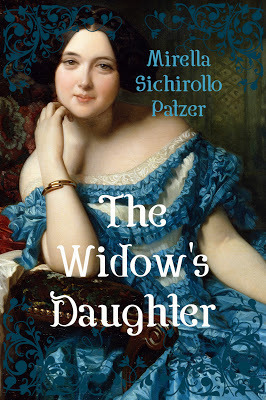
Free on Amazon, Kobo, Apple, Smashwords, and Barnes and Noble until Aug 4! In a world filled with danger, one secret will change everything!
Two lovers bound by love. A dreadful overlord who will shatter lives to possess the woman he desires. And the dark secrets that one woman will risk everything to keep buried. From the dangerous wilderness of New France, to the opulent salons of the aristocracy; the lives, loves, and secrets of a small town thrust a young man and young woman into danger and mayhem on the eve of their wedding.
The Widow's Daughter is an absorbing novel about wicked intentions, murder, obsessive love, undisclosed secrets, unstoppable destinies, and the woman whose secret will either destroy or restore lives. When an unscrupulous overlord attempts to kidnap Emilie and prevent her marriage to Robert, the act sends her fleeing for her life, straight into the path of danger and tragedy that exposes the worst and best in the people she encounters. A catastrophic chain of events turns her life into a desperate flight from home, thrusting her straight into peril. As dark secrets emerge, Emilie must reconcile her past and her love for each Robert. From taverns to convents, food riots to epidemics, Emilie and Robert must find their paths back to each other while learning the true meaning of love and forgiveness. The Widow's Daughter is a retelling of the classic novel, The Betrothed (I Promessi Sposi) by Alessandro Manzoni. Inspired by this epic Italian classic novel; a new and captivating tale in a new setting, a new century, and with new plot twists while remaining faithful to key story elements.









Published on July 29, 2013 21:49
July 23, 2013
The Legend of Lady Godiva
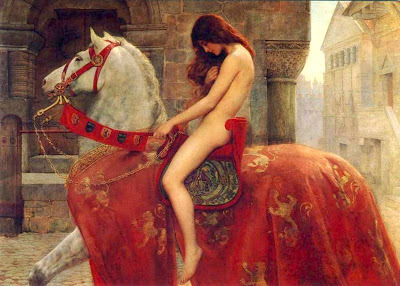
The legend of Lady Godiva has captured
the imagination of people for centuries. But it is only legend and there is
some doubt that the story, and the way it has evolved, is completely accurate.
Lady Godiva was the wife of
Leofric, Earl of Mercia. She was beautiful and known for her generous donations
to churches and charities.
A tax so heavy, so burdensome, was
imposed on the people of Coventry by Lady Godiva’s husband. It caused hardship,
hunger, and poverty. She did her best to convince her husband and other nobles
to repeal the tax, but to no avail. Tired of all the pressure she was exerting
on him, he said he would grant her request if she rode through the streets of
Coventry naked. Whether he said this in frustration or as a joke, Lady Godiva held
him to his promise. She insisted that all townsfolk had to stay indoors with
their windows shut. With her long hair carefully arranged around her body, she
made her famous ride.
One person failed to honor her
request to remain inside with the shutters closed. That was Peeping Tom. He
makes a little hole in his shutters to spy on the beautiful lady as she rode
past, but is struck blind when he does so.
Whatever the legend, throughout her life, Lady Godiva was a compassionate woman, wealthy, and who lavished numerous donations to churches and abbeys. Whatever the reason for her ride, it glimmers with courage, strength of will, and tremendous wit! Ride, lady ride. All for the good of the people!
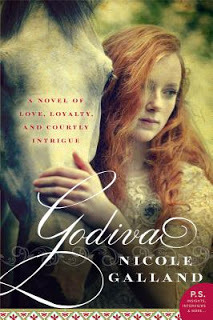
In the novel Godiva, by Nicole Galland, the author writes about this famous woman's life and the fascinating details of her ride.
Synopsis:
Nicole
Galland, author of The Fool’s
Tale, turns her clever pen toward re-imagining the famous legend of Lady
Godiva in this expertly crafted historical novel set in Anglo-Saxon England.
A 12th-century noblewoman, Lady Godiva is infamous for riding naked through
Coventry to relieve her people of her husband’s unfair and oppressive taxation.
Leofric, Earl of Mercia, said he would ease the tax burden if she would ride
through the streets, wearing only her glorious, long hair. In doing so she
risked everything, including her home and well-being.
Told with humor and precise attention to detail, Nicole Galland’s Godiva brings to life the
adventures of the legendary lady, her husband and her best friend the Abbess
Egdiva in thrilling detail. It’s an entertaining tale of courtly intrigue,
deceit, and romance that is sure to captivate fans of literary and historical
fiction.
My Review:
Godiva by Nicole Galland. It is
a novel meant to entertain. It’s a light, quick, read about the intriguing Lady
Godiva who has been legendary in English history. It’s light on historical
facts, but with just enough historical detail to bring the times to life.
I loved the simple way the introduction
was written. It helped explain a complex history regarding the tax in elegantly
simple prose. The book then opens with Godiva using her sexual prowess to put
an end to a dispute between her husband and a neighboring lord. It tainted my expectations
of Lady Godiva and made her seem more of a strumpet than a wise and strong
wife. It also sent a warning bell ringing in my mind because it made me think
the book would turn out to be like one of those all too common, inexpensive, bodice
ripper romances. Lucikly, as the novel progresses, Lady Godiva is given a
little more substance.
The novel was not encumbered
with too many characters, so it was easy to read. I liked that very much. It allowed me to relax into the story without having to struggle to keep track of who
is who. Much to my delight, the author introduced only those characters
integral to the story.
My favorite subplot was that of
Godiva’s friend, Abbess Egdiva and the troubles she got into. The brilliance of
the book is the chapters that pertain to Lady Godiva’s naked ride. I thought
that was writing at its very best, gripping,
descriptive, emotional – it had it all.
There are quite a few flaws in the historical details, but for those readers
who are more into the story than the history of the times, this will not be a
problem.
All in all, this was an
interesting novel, not one of my favorites by this author, but good all the
same.









Published on July 23, 2013 09:12
July 10, 2013
Empress Theodora - The Secret History by Stephanie Thornton

Theodora
Byzantine Empress
Theodora’s father was a bear trainer and her mother was a dancer and actress. Together, they had three daughters. Although the family was far from being wealthy, neither were they poor. That is, until Theordora’s father died and they soon found themselves destitute and homeless. Desperate, their mother dressed up her daughters and paraded them into the hippodrome n wearing garlands into the hippodrome and petitioned for them to be accepted into the elite Blue faction, a powerful political group of the time.
Still a child, Theodora aspired to be like her older sister, a prostitute, and her mother, an actress. Theodora found work as a prostitute in a grimy, brothel that serviced men of lower rank and wealth. She also performed as an actress, portraying indecent acts on stage and sex for payment off stage. Guided by a new friend named Antonina, Theodora’s exceptional wiliness and ability to perform unusual sexy acts, soon earned her fame and wealth.

She soon came under the attention of a Syrian man named Hecebolus who took her with him to Libya. He treated her badly, and abandoned her with nothing but the clothes on her back. Ever resilient, she slowly goes from country to country until she finds herself back home in Constantinople where she gave up her former life as a prostitute to become a wool spinner in a house near the palace. Very beautiful, smart, and cunning, she soon came to the attention of Justinian, the heir of the emperor. Ultimately, they married and she ruled by his side. Her life story is immortalized in Stephanie Thornton's novel, The Secret History.

Where Theodora went, trouble followed….
In sixth-century Constantinople, one woman, Theodora, defied
every convention and all the odds and rose from common theater tart to empress
of a great kingdom, the most powerful woman the Roman Empire would ever
know. The woman whose image was later immortalized in glittering mosaic
was a scrappy, clever, conniving, flesh-and-blood woman full of sensuality and
spirit whose real story is as surprising as any ever told….
After her father dies suddenly, Theodora
and her sisters face starvation and a life on the streets. Determined to
survive, Theodora makes a living any way she can—first on her back with every
man who will have her, then on the stage in a scandalous dramatization of her
own invention. When her daring performance grants her a backdoor entry into the
halls of power, she seizes the chance to win a wealthy protector—only to face
heartbreak and betrayal.
Ever resilient, Theodora rises above such trials and, by a twist of fate, meets
her most passionate admirer yet: the emperor’s nephew. She thrives as his
confidant and courtesan, but many challenges lie ahead. For one day this man
will hand her a crown. And all the empire will wonder—is she bold enough,
shrewd enough, and strong enough to keep it?
The
story of Theodora is one of history’s most fascinating rags-to-riches story and
it comes alive by Stephanie Thornton’s pen! The author does an exceptional job
at portraying the Byzantine empire with all its political machinations, opulence,
and underworld horrors. It is never easy writing about a ruthless woman from
the dregs of society who rises to the highest levels, for to do so she will
need to have her faults as well as her assets correctly portrayed. The author
did a marvelous job at writing the good and the bad about Theodora’s personality
and actions without creating a bias. Theodora comes across as credible and real,
completely absorbing and insightful. A truly wonderful biographical novel!
WE LOVE COMMENTS

From History and Women









Published on July 10, 2013 10:04
July 1, 2013
History and Women Book Club's July Book!
The Crimson Petal and the White by Michel Faber is our book choice for July! Made into a television series and widely acclaimed as exciting Victorian fiction, it will be a great summer read. Join our book club by clicking on the book in the right menu!
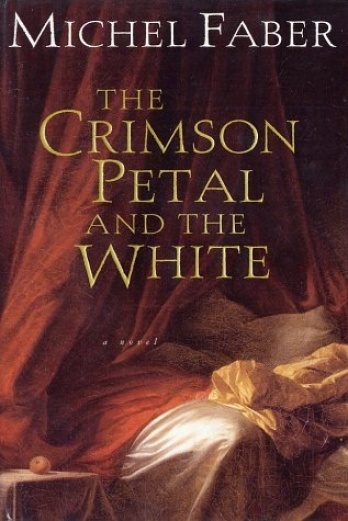
Book Descriptions:
At the heart of this panoramic, multidimensional narrative is the
compelling struggle of a young woman to lift her body and soul out of the
gutter. Faber leads us back to 1870s London, where Sugar, a nineteen-year-old
whore in the brothel of the terrifying Mrs. Castaway, yearns for escape to a
better life. Her ascent through the strata of Victorian society offers us
intimacy with a host of lovable, maddening, unforgettable characters. They begin
with William Rackham, an egotistical perfume magnate whose ambition is fueled by
his lust for Sugar, and whose patronage brings her into proximity to his
extended family and milieu: his unhinged, childlike wife, Agnes, who manages to
overcome her chronic hysteria to make her appearances during “the Season”; his
mysteriously hidden-away daughter, Sophie, left to the care of minions; his
pious brother, Henry, foiled in his devotional calling by a persistently
less-than-chaste love for the Widow Fox, whose efforts on behalf of The Rescue
Society lead Henry into ever-more disturbing confrontations with flesh; all this
overseen by assorted preening socialites, drunken journalists, untrustworthy
servants, vile guttersnipes, and whores of all stripes and persuasions.
Twenty years in its conception, research, and writing, The Crimson
Petal and the White is teeming with life, rich in texture and incident, with
characters breathtakingly real. In a class by itself, it's a big, juicy,
must-read of a novel that will delight, enthrall, provoke, and entertain young
and old, male and female.
WE LOVE COMMENTS

From History and Women










Book Descriptions:
At the heart of this panoramic, multidimensional narrative is the
compelling struggle of a young woman to lift her body and soul out of the
gutter. Faber leads us back to 1870s London, where Sugar, a nineteen-year-old
whore in the brothel of the terrifying Mrs. Castaway, yearns for escape to a
better life. Her ascent through the strata of Victorian society offers us
intimacy with a host of lovable, maddening, unforgettable characters. They begin
with William Rackham, an egotistical perfume magnate whose ambition is fueled by
his lust for Sugar, and whose patronage brings her into proximity to his
extended family and milieu: his unhinged, childlike wife, Agnes, who manages to
overcome her chronic hysteria to make her appearances during “the Season”; his
mysteriously hidden-away daughter, Sophie, left to the care of minions; his
pious brother, Henry, foiled in his devotional calling by a persistently
less-than-chaste love for the Widow Fox, whose efforts on behalf of The Rescue
Society lead Henry into ever-more disturbing confrontations with flesh; all this
overseen by assorted preening socialites, drunken journalists, untrustworthy
servants, vile guttersnipes, and whores of all stripes and persuasions.
Twenty years in its conception, research, and writing, The Crimson
Petal and the White is teeming with life, rich in texture and incident, with
characters breathtakingly real. In a class by itself, it's a big, juicy,
must-read of a novel that will delight, enthrall, provoke, and entertain young
and old, male and female.
WE LOVE COMMENTS

From History and Women









Published on July 01, 2013 09:50



